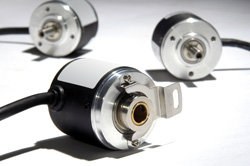Super sensors using ceramics
High-temperature sensors can function in extremely hot and hostile environments, making them very useful in aerospace, industrial processes, automotive industry, and power generation. Specific materials known as Aurivillius phase ceramics are very important in manufacturing these sensors. When heated to a certain temperature (known as the Curie point) their properties are altered in a way that improves sensor readings. The EU-funded 'High temperature sensors' (HITS) project conducted studies on Aurivillius phase ceramics to examine its suitability in creating high-temperature sensors. Scientists studied how to produce efficient piezoelectric sensors, i.e. sensors that can measure acceleration, force, pressure and strain. The project team investigated various characteristics of the new ceramic material, including its electrical conductivity, Curie point, magnetism, and other properties. HITS also worked on manufacturing microstructures for these sensors using a technique called spark plasma sintering (SPS). This involves rapid heating of the ceramic up to 500°C per minute at very high pressure, using extremely advanced equipment. The resulting ceramics can achieve the desired piezoelectric properties for highly accurate sensing abilities. In short, the HITS project documented several new observations and drew important conclusions regarding Aurivillius phase ceramics, particularly their ferroelectric properties under high temperatures. This information will soon help produce more sophisticated sensors that enhance monitoring and safety as well as meet energy needs across several industries.



